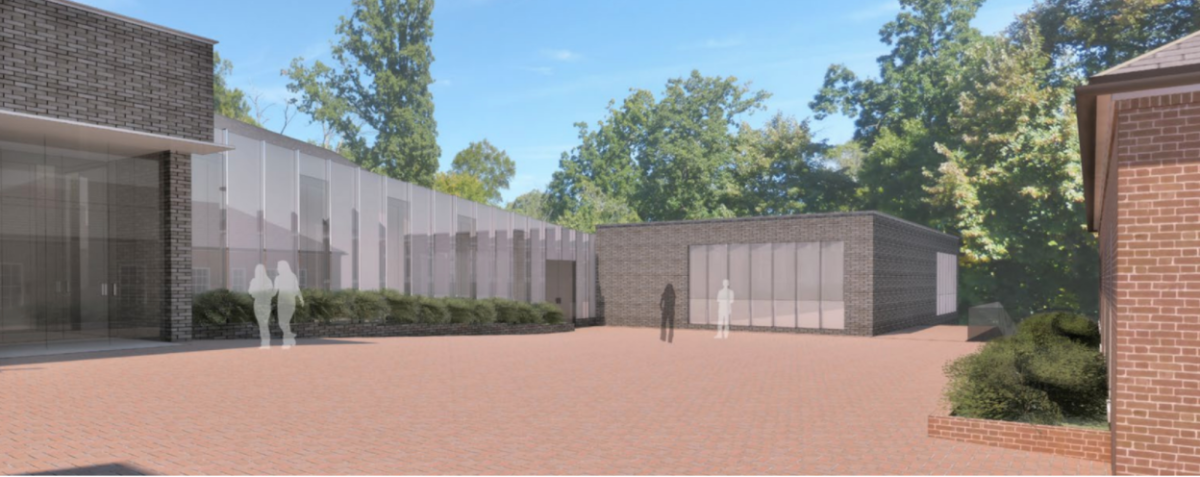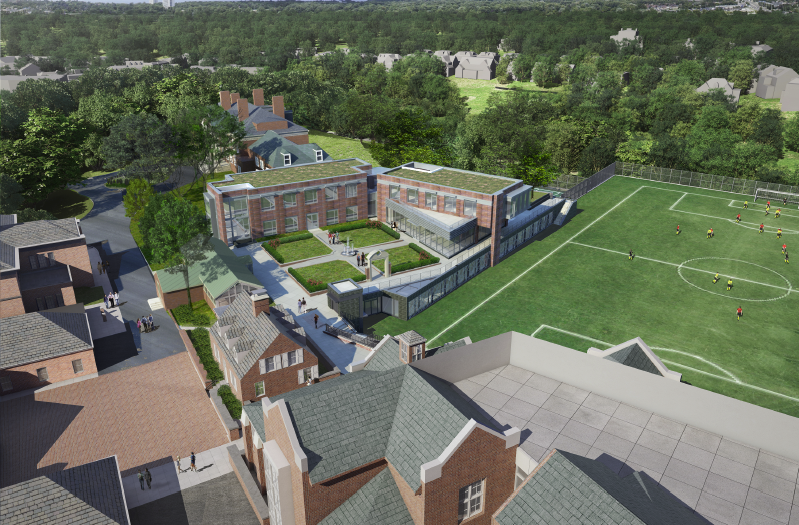June 2023 marked the start of construction for “Le Centre Brown”, the WIS Tregaron campus’s new science building. Once home to the Ulysses G. Auger II Field and Dacha, the area is now dominated by scaffolding frames and cranes. From losing home soccer matches to the constant flow of trucks circulating through campus, the new development has brought many changes to the Tregaron Campus.
Set to finish by spring 2025, they will introduce new and improved science and design labs, intended to foster creativity among students, according to Destination WIS.
Dateline spoke with Assistant Project Manager Elias Eid to understand more about the construction. Answers have been edited for concision and clarity.
International Dateline (ID): What is your responsibility regarding the construction?
Elias Eid (EE): I am responsible for ensuring that the project is moving on schedule, that all necessary materials are present and that all necessary paperwork is complete.
ID: What are the different types of jobs present on the construction site?
EE: First, there are various stakeholders involved in the project. There is always an owner (WIS), a builder (MCN Build), and then the different groups of workers such as those who work with concrete, those who remove the dirt, the electricians, etc.
Yet, before any decisions are made about construction, some consultants transform ideas and visions into plans or designs that can be developed. Once both the owner and consultants agree on the designs, a building company will buy the designs and carry on with the project.
ID: What does the construction process look like?
EE: A big part of the process is keeping track of the materials on the construction site such as the concrete trucks, the operation of the crane, and the heavy equipment and materials. There is a 24-hour notice for the entrance and exit of all trucks carrying the stuff needed as the traffic is another aspect of the process that needs to be monitored.
Precautions are taken for the safety of the people on site and the WIS community, especially when there are many people on the site such as morning drop-off.
ID: What are the safety concerns of this specific site?
EE: The first concern is the tight space when entering and exiting the site. Only one truck can fit on the one-way road at a time. Therefore, the workers have to flag the trucks driving on this road by making sure that no one is walking along it so that the truck doesn’t get stuck.
Additionally, on-site safety is also important. The workers wear protective gear to do so.
ID: How and why is building at Tregaron different from building downtown?
EE: The main difference is that Tregaron is an active site. This means that instead of being closed off to focus on the construction, the campus is still open as students, staff, and visitors move around it.
Therefore, the schedule has to be adjusted to take advantage of the time when the campus is empty or not as busy. However, the same goes for not being able to do as much work when everyone is walking near the site.
Instead of a regular work day of eight hours for the material deliveries, only four hours would be available because of how busy the campus is which makes it more difficult to conduct such a task.
ID: Why is there no concrete plant on the site?
EE: Having a concrete plant on the site would take a lot of infrastructure. Since this project needs a large amount of concrete, the plant needs to be large. In addition, there is barely enough space as there is.
ID: How much of the schedule takes into consideration the rain and weather delay?
EE: The forecast is always monitored to ensure the safety of the workers and to identify whether construction will be disrupted or not. Before the construction even begins, the forecast is analyzed to get a picture of the possible weather conditions throughout the year.
The weather statistics from the previous year are assessed to estimate the number of days that weather delays will impact. This data is then shared with the stakeholders along with how the schedule will be adjusted. Although the weather forecast is uncontrollable, this data can at least give the workers and stakeholders an idea of what it would possibly look like.
ID: What is the purpose of the wall made of wood?
EE: This wood wall is used for support. To be able to move the Dacha, around 30 feet of land, some steel poles were placed to hold up the excavation, which is known as the Support of Excavation (SOE). The bottom of the poles are placed below the final digging point. However, these poles do not provide enough support.
The plan was to place the steel columns below the level of dirt that needed to be reached. Yet, once more and more dirt is dug out, the dirt in between the poles and surrounding the digging area will collapse or fall into the digging region as they lose their support. Thus, the wood boards are placed in between the columns to serve as a supportive barrier by holding the weight of the surrounding dirt which prevents it from falling over.
This excavation method is not only effective but also time-efficient which is important since, as mentioned before, the construction schedule is already limited. It is also cost-efficient as placing steel piles all around the digging region, right next to one another, would require using big machines.
Then, as progress is made, a concrete wall is built on the side towards the construction site. The already present foundation walls already formed serve as a mold for the wet concrete as it hardens.

ID: At this pace, do you think that you are ready to finish by 2025?
EE: Overall, the workers are on track to finish by 2025. They have a reputation for building schools and finishing them on schedule.
ID: As the building will be incorporating green roofs, what is the plan for them?
EE: The green roofs are the main focus of the environmental components of the project. Since the roofs will be covered in plants, the first thing that will need to be taken into consideration is how to deal with watering them.
Therefore, the dirt that will need to be used should be able to hold the water given to the plants without leaking through. However, at the same time, this type of dirt should not be able to hold a lot of water because then the roof will be forced to carry too much weight.
Making sure the water gets out of the system, ensuring that the plants get enough water, and deciding what dirt should be used must be done very diligently to prevent such an issue.
ID: Are there any potential exterior plans on the campus other than the new building?
EE: There are many of these smaller projects such as redoing the main entrance driveway and all the other driveways, building a pergola or picnic space, and transforming the Pink Patio into a grill terrace. The Tregaron campus will be changed by a good amount.
If you would like to read more about Destination WIS and the plans for the new science building, visit: https://www.wis.edu/destination-wis/destination-landing
By Selena Said




































































